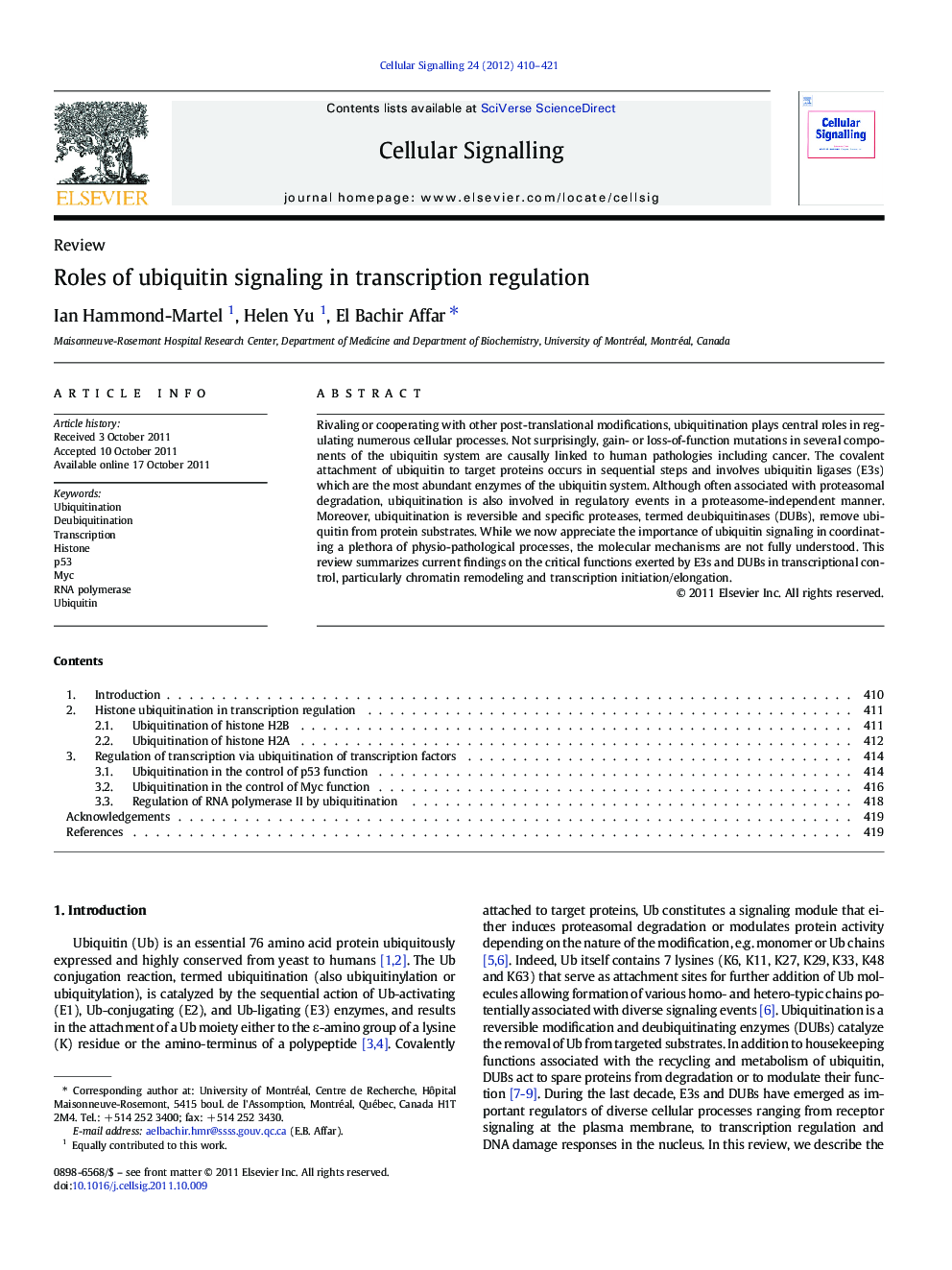| Article ID | Journal | Published Year | Pages | File Type |
|---|---|---|---|---|
| 1964694 | Cellular Signalling | 2012 | 12 Pages |
Rivaling or cooperating with other post-translational modifications, ubiquitination plays central roles in regulating numerous cellular processes. Not surprisingly, gain- or loss-of-function mutations in several components of the ubiquitin system are causally linked to human pathologies including cancer. The covalent attachment of ubiquitin to target proteins occurs in sequential steps and involves ubiquitin ligases (E3s) which are the most abundant enzymes of the ubiquitin system. Although often associated with proteasomal degradation, ubiquitination is also involved in regulatory events in a proteasome-independent manner. Moreover, ubiquitination is reversible and specific proteases, termed deubiquitinases (DUBs), remove ubiquitin from protein substrates. While we now appreciate the importance of ubiquitin signaling in coordinating a plethora of physio-pathological processes, the molecular mechanisms are not fully understood. This review summarizes current findings on the critical functions exerted by E3s and DUBs in transcriptional control, particularly chromatin remodeling and transcription initiation/elongation.
► Histone ubiquitination plays a major role in regulating gene expression. ► Transcription factors p53 and Myc are exquisitely regulated by ubiquitination. ► Processivity of RNA pol II is controlled by differential usage of ligases and DUBs.
